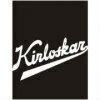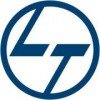Filter interviews by
CONTINENTAL THERMAL ENGINEERS Electrical Project Engineer Interview Questions and Answers
CONTINENTAL THERMAL ENGINEERS Electrical Project Engineer Interview Experiences
1 interview found
I applied via Referral and was interviewed in May 2024. There was 1 interview round.
(2 Questions)
- Q1. Selection of contactor
- Ans.
The selection of a contactor depends on the load type, voltage, current, and duty cycle.
Consider the type of load (inductive, resistive, capacitive)
Calculate the voltage and current ratings of the load
Determine the duty cycle of the load (continuous, intermittent)
Select a contactor with appropriate voltage, current, and duty cycle ratings
Consider additional features like overload protection and coil voltage
- Q2. Type 2 co ordination chart
- Ans.
Type 2 coordination chart is used in electrical engineering to show the coordination between protective devices.
Type 2 coordination chart shows the coordination between protective devices in an electrical system.
It helps in ensuring that the protective devices operate in the correct sequence during a fault.
The chart typically includes time-current curves for different protective devices.
It is important for preventing u...
Interview Preparation Tips
Top trending discussions






Interview questions from similar companies

Electrical Project Engineer Interview Questions & Answers
KEC Internationalposted on 6 Apr 2024
I applied via Walk-in and was interviewed in Mar 2024. There was 1 interview round.
(2 Questions)
- Q1. Work related for technical questions
- Q2. Growth the achievement

I applied via Campus Placement and was interviewed in Jun 2024. There were 2 interview rounds.
(3 Questions)
- Q1. What do you no rotating part of machine
- Ans.
Rotating parts of a machine are components that move in a circular motion, such as motors, turbines, or fans.
Rotating parts are typically components like motors, turbines, fans, or rotating shafts.
Non-rotating parts include components like housings, casings, brackets, or stationary supports.
Non-rotating parts are usually fixed in place and provide support or protection for the rotating components.
Examples of non-rotati...
- Q2. An a ac machine is used
- Ans.
An a induction Machine is pure ac machine are the work in frady law
- Q3. A motor no load starting
- Ans.
Series motors are the very high starting toque they are not stated
(3 Questions)
- Q1. An a ac to dc machine prepare operated
- Q2. An a constant speed of motor
- Q3. High starting toque machine is
- Ans.
A high starting torque machine is a type of motor that can produce a large amount of torque when starting up.
High starting torque machines are commonly used in applications where a large amount of torque is required at startup, such as in industrial machinery or electric vehicles.
These machines typically have special rotor designs or additional starting windings to provide the extra torque needed.
Examples of high start...

Electrical Maintenance Engineer Interview Questions & Answers
Hero MotoCorpposted on 30 Jun 2024
I applied via AmbitionBox and was interviewed in May 2024. There were 2 interview rounds.
(2 Questions)
- Q1. How to get a job?
- Q2. I have a diploma complete in Electrical and electronics engineering ।year 2004
(1 Question)
- Q1. How to give interview

I applied via Naukri.com and was interviewed in Feb 2023. There were 2 interview rounds.

(2 Questions)
- Q1. 1. What about you 2. Why change job. 3. Technically and maintenance related discus 4. How to manage shift and clint 5. Excel, document and PPT prepare This type question asked
- Ans. 1. Transformer tendelta test 2. ACB maintenance
- Q2. Relay related data readers and satting
Interview Preparation Tips

I applied via Company Website and was interviewed in Jul 2023. There were 3 interview rounds.

Anithing example - Transformer, PLC, motors discuss
(2 Questions)
- Q1. Introduction , Transformer, PLC etc.question
- Q2. Motors discussion
Interview Preparation Tips


Basic appti ques were asked
(3 Questions)
- Q1. Basic knowledge about electrical engineering is must to clear it
- Q2. What is transformer types
- Ans.
Transformer types include step-up, step-down, isolation, autotransformer, and instrument transformer.
Step-up transformer increases voltage while decreasing current
Step-down transformer decreases voltage while increasing current
Isolation transformer separates primary and secondary windings
Autotransformer has a single winding with multiple taps for voltage adjustment
Instrument transformer is used for measuring current or
- Q3. Motors & it's types
- Ans.
Motors are devices that convert electrical energy into mechanical energy. There are various types of motors.
DC motors: used in appliances, toys, and automobiles
AC motors: used in industrial machinery and household appliances
Stepper motors: used in robotics and automation
Servo motors: used in precision control applications
Brushless motors: used in drones and electric vehicles

Electrical Engineer Interview Questions & Answers
Sun Pharmaceutical Industriesposted on 17 Feb 2023

(2 Questions)
- Q1. Kjjlsjls jkajilaui lkjdsiuusrsu jusorrs jrsoisroirsoi heiffue bxmxgfsfrt bggh jhgutrt gkjtyereer vfgyj gg ghyj rrtr grey hyr
- Q2. Fgdreefwewewewewewew hgtr ftrryerehnm,hjyjr hjkugugt
Interview Preparation Tips
Waiting for study CV
Identify type Job Looking

I applied via Campus Placement

(3 Questions)
- Q1. I am electrical engineer
- Q2. Non technical and technical question
- Q3. Diploma in electrical engineering
Interview Preparation Tips

I applied via Campus Placement and was interviewed in Jun 2022. There were 3 interview rounds.
(3 Questions)
- Q1. Who is the home s law
- Ans.
Home's law is a principle that states that the current flowing through a conductor is directly proportional to the voltage applied across it.
Home's law is also known as Ohm's law.
It is expressed as I = V/R, where I is the current, V is the voltage, and R is the resistance.
This law is fundamental to the study of electrical circuits and is used to calculate the behavior of circuits.
For example, if the voltage across a re...
- Q2. What is current unit?
- Ans.
The current unit is the ampere (A), which measures the flow of electric charge.
The unit of electric current is the ampere (A).
Current is the rate of flow of electric charge.
It is measured using an ammeter.
One ampere is equal to one coulomb of charge passing through a point in one second.
- Q3. What is voltagel unit?
- Ans.
Voltage is the unit of measurement for electric potential difference.
Voltage is the force that pushes electric charges through a circuit.
It is measured in volts (V).
Voltage is essential for the operation of electrical devices.
Examples of voltage units include millivolts (mV), kilovolts (kV), and megavolts (MV).
(1 Question)
- Q1. What is ohm law and current symble
- Ans.
Ohm's law states that the current flowing through a conductor is directly proportional to the voltage applied across it.
Ohm's law is expressed as V = I * R, where V is the voltage, I is the current, and R is the resistance.
The current symbol is represented by the letter 'I'.
Ohm's law is fundamental in understanding and analyzing electrical circuits.
Example: If a circuit has a voltage of 12 volts and a resistance of 4 o...
(2 Questions)
- Q1. Tow type of winding ?
- Ans.
The two types of winding in electrical engineering are lap winding and wave winding.
Lap winding is used in DC machines and is characterized by multiple parallel paths for current flow.
Wave winding is used in AC machines and is characterized by a single path for current flow.
Lap winding provides high current capacity and low voltage output, while wave winding provides low current capacity and high voltage output.
In lap ...
- Q2. What is men by primary winding
- Ans.
The primary winding is the first coil in a transformer that receives electrical energy.
The primary winding is typically connected to the power source.
It is responsible for receiving and transmitting electrical energy to the secondary winding.
The number of turns in the primary winding determines the voltage ratio between the primary and secondary sides.
Primary windings are commonly found in transformers, induction motor
Interview Preparation Tips
CONTINENTAL THERMAL ENGINEERS Interview FAQs
Tell us how to improve this page.
Interview Questions for Popular Designations
- Senior Electrical Engineer Interview Questions
- Electrical Site Engineer Interview Questions
- Electrical Engineer Interview Questions
- Electrical & Instrumentation Engineer Interview Questions
- Electrical Technician Interview Questions
- Electrical Supervisor Interview Questions
- Electrical Maintenance Engineer Interview Questions
- Electrical GET Interview Questions
- Show more
CONTINENTAL THERMAL ENGINEERS Electrical Project Engineer Interview Process
based on 1 interview
Interview experience
Interview Questions from Similar Companies
|
Plant Head
4
salaries
| ₹2.2 L/yr - ₹3.5 L/yr |
|
General Manager
3
salaries
| ₹14 L/yr - ₹22 L/yr |
|
Unit Head
3
salaries
| ₹3 L/yr - ₹3 L/yr |
|
Electrical Instrument Engineer
3
salaries
| ₹7.5 L/yr - ₹11 L/yr |

Thermax Limited

Forbes Marshall

Alfa Laval

Kirloskar Brothers
- Home >
- Interviews >
- CONTINENTAL THERMAL ENGINEERS Interview Questions >
- CONTINENTAL THERMAL ENGINEERS Electrical Project Engineer Interview Questions










